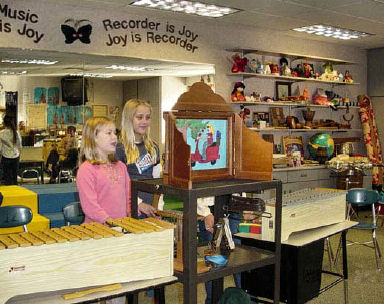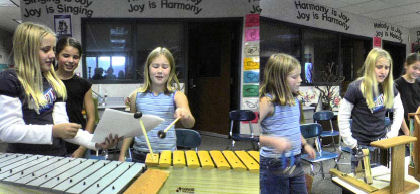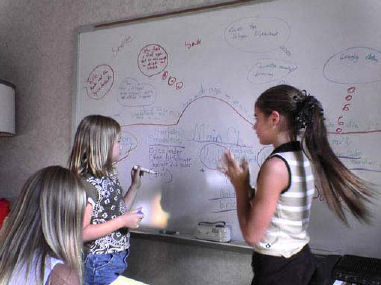
 |
 |
 |
 |
 |
|||||||
|
|---|
|
|
Educator’s Spotlight/ Dorothy K. Kittaka
Kamishibai Connections  The Japanese picture card method of storytelling was a vehicle for me both to learn more about my background and to introduce Japanese culture to students through stories. I then could use this to teach music, art, drama, literature, history and science in a new way. It also led to a project that brought me to Japan through a Fulbright Memorial Fund Scholarship. Children are captivated by listening to and watching a performance of kamishibai stories. Also, they can use the medium of kamishibai to write their own stories, illustrate them and become dramatic storytellers themselves. In my music classes, the children wrote poetry and haiku about certain scenes from a kamishibai story and then composed music to enhance the words. They performed their kamishibai by singing and playing instruments, adding sound effects to the reading of each story. Music can be a link to make each story more meaningful to both the listener and the performer by providing an emotional connection which words alone cannot convey.  Why Kamishibai? The kamishibai stories are written in dialogue form instead of narrative, thus making the presentation more compelling and dramatic. The stories teach lessons about integrity, caring, common sense, initiative, effort and perseverance, sense of humor, courage, resourcefulness, courage and values. Kamishibai can be used as a catalyst to encourage better writing, reading, musical and artistic skills.  Kamishibai is a tool to develop connections among classroom, music and art teachers. Students can write their own kamishibai stories, the art teacher can help students illustrate them and the music teacher can use the stories to inspire students to compose poetry and music to enhance the storytelling. Thus, kamishibai can enhance learning in many curriculum areas governed by state and national standards. Suggestions for Extended, Integrated Activities:
The National Association for Music Education has recognized Dorothy’s work with music and kamishibai. More about Dorothy’s innovative work combining kamishibai with music can be found at their website. |
|---|
 |
|---|
|
Kamishibai for Kids ~ 2358 University Avenue #179, San Diego, CA 92104 |